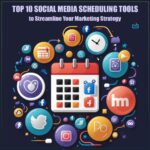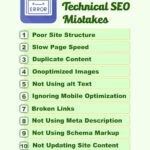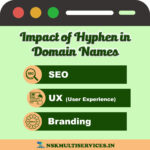Strategic use of Images in Search Engine Optimization
In the ever-evolving landscape of search engine optimization (SEO), website owners and marketers are constantly seeking innovative ways to improve their rankings and enhance user experience. One often-underutilized yet potent SEO tool is images. Images have the potential to not only engage and captivate users but also boost your website’s visibility in search engine results pages (SERPs). In this comprehensive guide, we’ll explore the strategic use of images in SEO, covering everything from optimization techniques to best practices and the latest trends.
Section 1: The Importance of Images in SEO
1.1 Visual Appeal and User Engagement
Images play a crucial role in creating a visually appealing and engaging website. They break up long chunks of text, making content more digestible and aesthetically pleasing. A well-placed image can capture a user’s attention and keep them on your page longer, reducing bounce rates.
1.2 Accessibility and Inclusivity
Beyond their visual appeal, images also enhance accessibility and inclusivity. Alt text descriptions enable screen readers to convey image content to visually impaired users, making your website more accessible to a wider audience and improving SEO.
1.3 Reducing Page Load Times
Optimized images can significantly contribute to reducing page load times, which is a critical factor in SEO. Faster-loading pages improve user experience and contribute positively to your search engine rankings.
Section 2: Optimizing Images for SEO
2.1 Image File Formats
Choosing the right image file format is essential for SEO. Use JPEG for photographs and images with gradients, PNG for images with transparency, and SVG for simple graphics and icons. Selecting the appropriate format can impact image quality and page load times.
2.2 Image Dimensions and Resolutions
Resize images to the dimensions needed on your web page to avoid unnecessary file size and improve loading times. Ensure images are of high quality but not excessively large.
2.3 Compression
Use image compression techniques to reduce file sizes without compromising quality. Various tools and plugins are available to help compress images effectively.
2.4 Descriptive Filenames
Give your image files descriptive, keyword-rich filenames. Avoid generic names like “image001.jpg.” Instead, opt for something like “red-velvet-cake-slice.jpg” if it’s an image of a dessert.
2.5 Alt Text
Alt text, or alternative text, is a concise description of the image’s content. It should be informative, descriptive, and contain relevant keywords. Alt text helps search engines understand the context of your images and improves accessibility.
2.6 Image Captions
Image captions provide additional context to your images and can contain relevant keywords. They are valuable for user engagement and can also improve SEO.
2.7 Image Sitemaps
Include images in your XML sitemap to ensure search engines can discover and index them. This practice enhances your chances of appearing in image search results.
Section 3: SEO Best Practices for Image Usage
3.1 Relevant Images
Use images that are directly related to your content. Irrelevant images can confuse users and negatively impact SEO.
3.2 Original Images
Whenever possible, use original images rather than stock photos. Original visuals can set your content apart and enhance your brand’s authenticity.
3.3 Image Placement
Strategically place images throughout your content to break up text and maintain user interest. Use images to illustrate concepts, provide examples, or enhance storytelling.
3.4 Image SEO for E-commerce
For e-commerce websites, optimize product images by including detailed product descriptions, alt text, and high-resolution images that users can zoom in on.
3.5 Image File Size
Optimize image file sizes to ensure fast-loading pages. This is especially crucial for mobile users and contributes to better SEO rankings.
Section 4: Image SEO Trends and Innovations
4.1 Image Recognition Technology
Advancements in image recognition technology enable search engines to understand image content more accurately. This technology can impact how images are ranked and displayed in search results.
4.2 Visual Search
Visual search is gaining prominence, allowing users to search using images rather than text. Optimizing your images for visual search can provide a competitive edge.
4.3 Schema Markup for Images
Implement schema markup to provide additional context to search engines about your images. This can result in rich snippets and improved click-through rates.
Section 5: Image SEO Tools and Resources
5.1 Image Editing and Compression Tools
Explore popular image editing and compression tools like Adobe Photoshop, Canva, and online services like TinyPNG and ImageOptim.
5.2 SEO Plugins
For content management systems like WordPress, use SEO plugins like Yoast SEO or Rank Math that offer image optimization features and guidance.
5.3 Google’s PageSpeed Insights
Google’s PageSpeed Insights tool can help you analyze your website’s image optimization and provide recommendations for improvement.
Section 6: Case Studies – Successful Image SEO Implementation
In this section, we’ll delve into real-world examples of websites or businesses that have successfully implemented image SEO strategies and the impact it had on their SEO efforts.
Related Articles
Section 7: Conclusion
Summarize the key takeaways from this guide, emphasizing the importance of images in SEO, the optimization techniques discussed, and the evolving trends in image SEO. Encourage readers to implement these strategies to enhance their website’s SEO performance and user experience.
Section 8: Additional Resources
Provide links to additional resources, tools, and articles related to image SEO to help readers further explore and deepen their knowledge on the subject.
In this comprehensive guide, we’ve covered the significance of images in SEO, optimization techniques, best practices, emerging trends, and real-world examples. By strategically using images and optimizing them for SEO, you can elevate your website’s visibility, engage users, and ultimately drive organic traffic and conversions.



